Model Context Protocol (MCP) finally gives AI models a way to access the business data needed to make them really useful at work. CData MCP Servers have the depth and performance to make sure AI has access to all of the answers.
Try them now for free →Automated Continuous Google Sheets Data Replication to OneLake in Microsoft Fabric
Use CData Sync for automated, continuous, customizable Google Sheets data replication to OneLake in Microsoft Fabric.
Always-on applications rely on automatic failover capabilities and real-time data access. CData Sync integrates live Google Sheets data into your OneLake instance in Microsoft Fabric, allowing you to consolidate all your data into a single location for archiving, reporting, analytics, machine learning, artificial intelligence and more.
Configure OneLake as a Replication Destination
Using CData Sync, you can replicate Google Sheets data to OneLake. To add a replication destination, navigate to the Connections tab.
- Click Add Connection.
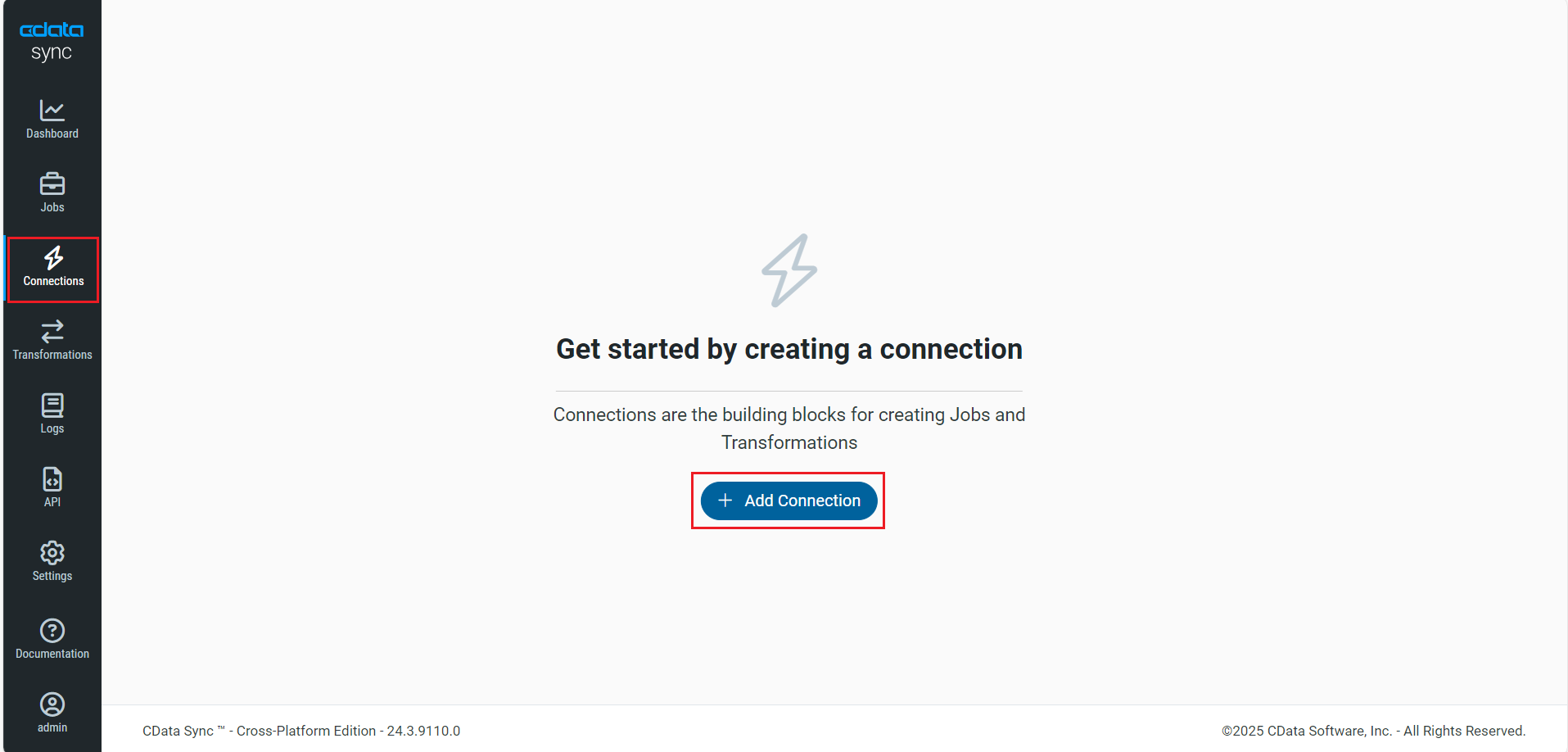
- Click the Sources tab and locate Azure OneLake connector.
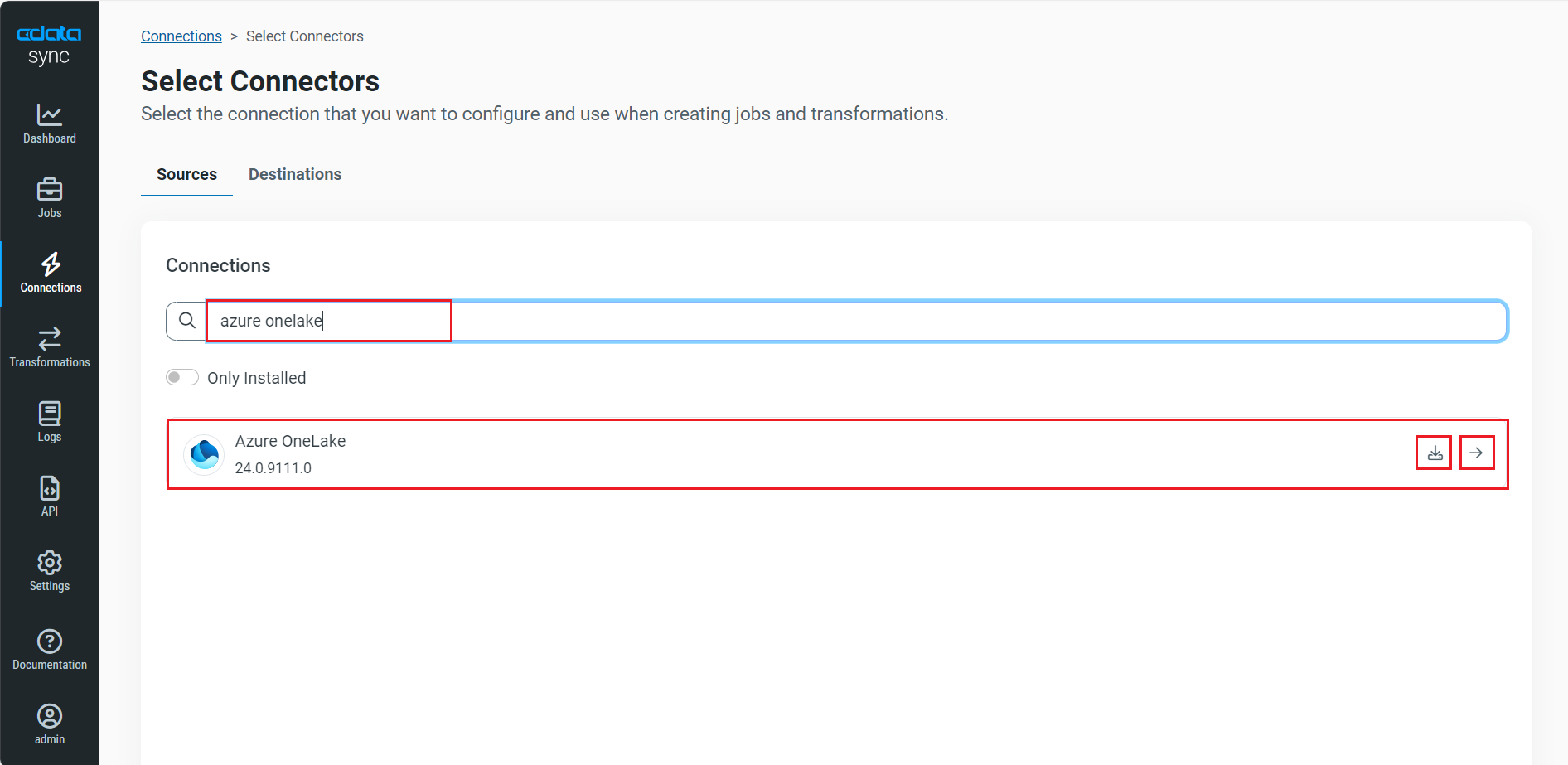
- Click the Configure Connection icon at the end of that row to open the New Connection page. If the Configure Connection icon is not available, click the Download Connector icon to install the OneLake connector. For more information about installing new connectors, see Connections in the Help documentation.
- After the connected is added, enter the following Basic connection properties under Settings to connect to OneLake:
- Connection Name: Enter a connection name of your choice.
- File Format: Select the file format that you want to use. Sync supports the CSV, PARQUET, and AVRO file formats.
- URI: Enter the path of the file system and folder that contains your files (for example, onelake://Workspace/Test.LakeHouse/Files/CustomFolder).
- Auth Scheme: To connect with an Azure Active Directory (AD) user account, select Azure AD for Auth Scheme. CData Sync provides an embedded OAuth application with which to connect so no additional properties are required.
- Data Model: Specify the data format to use while parsing the selected file format documents and generating the database metadata.
- If you are hosting CData Sync (locally or in your own cloud):
- Use CData CallbackURL: Disable the toggle.
- Callback URL: Enter the Callback URL.
- If you are using CData Sync Cloud, leave the Use CData CallbackURL toggle enabled.
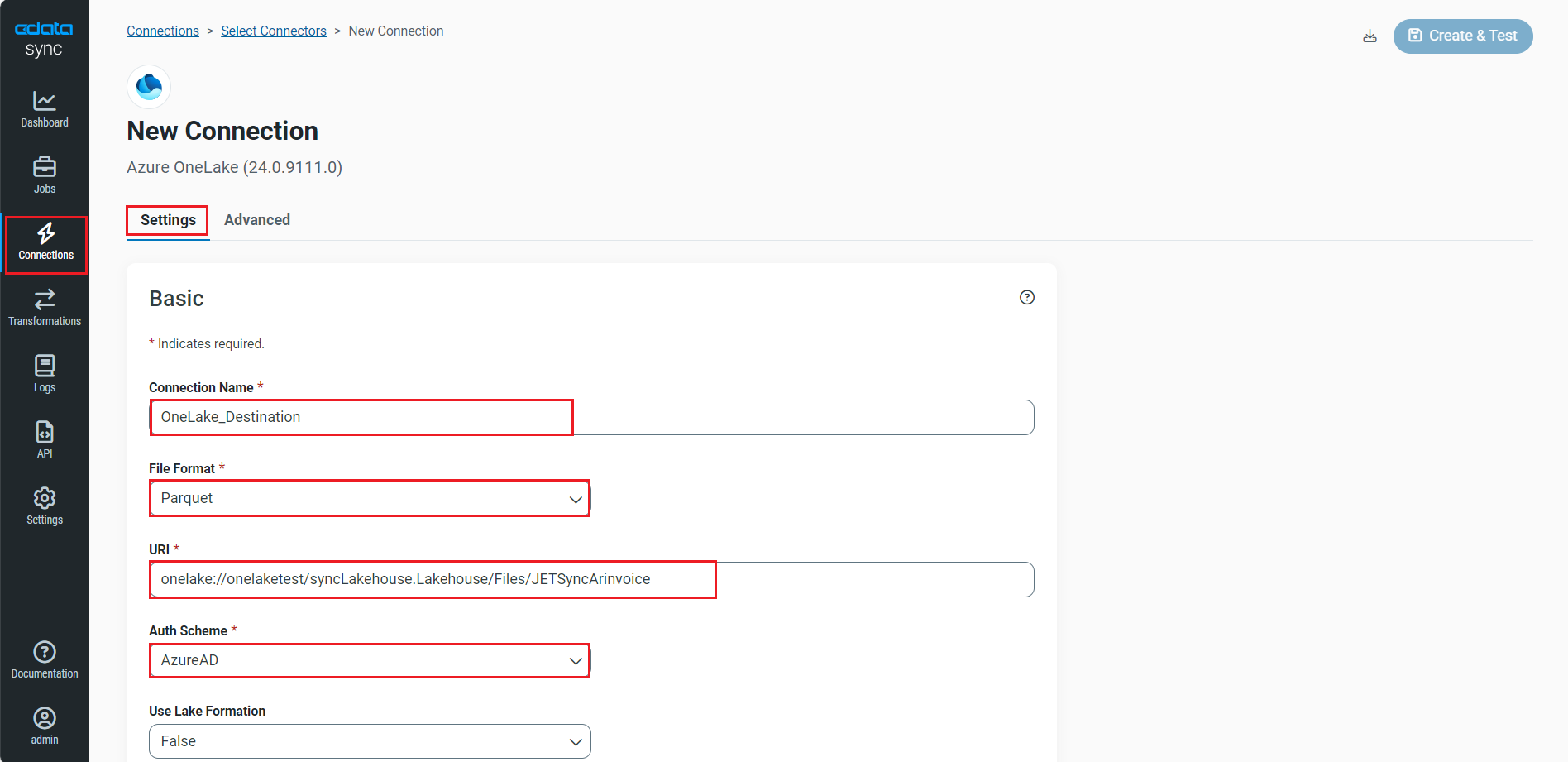
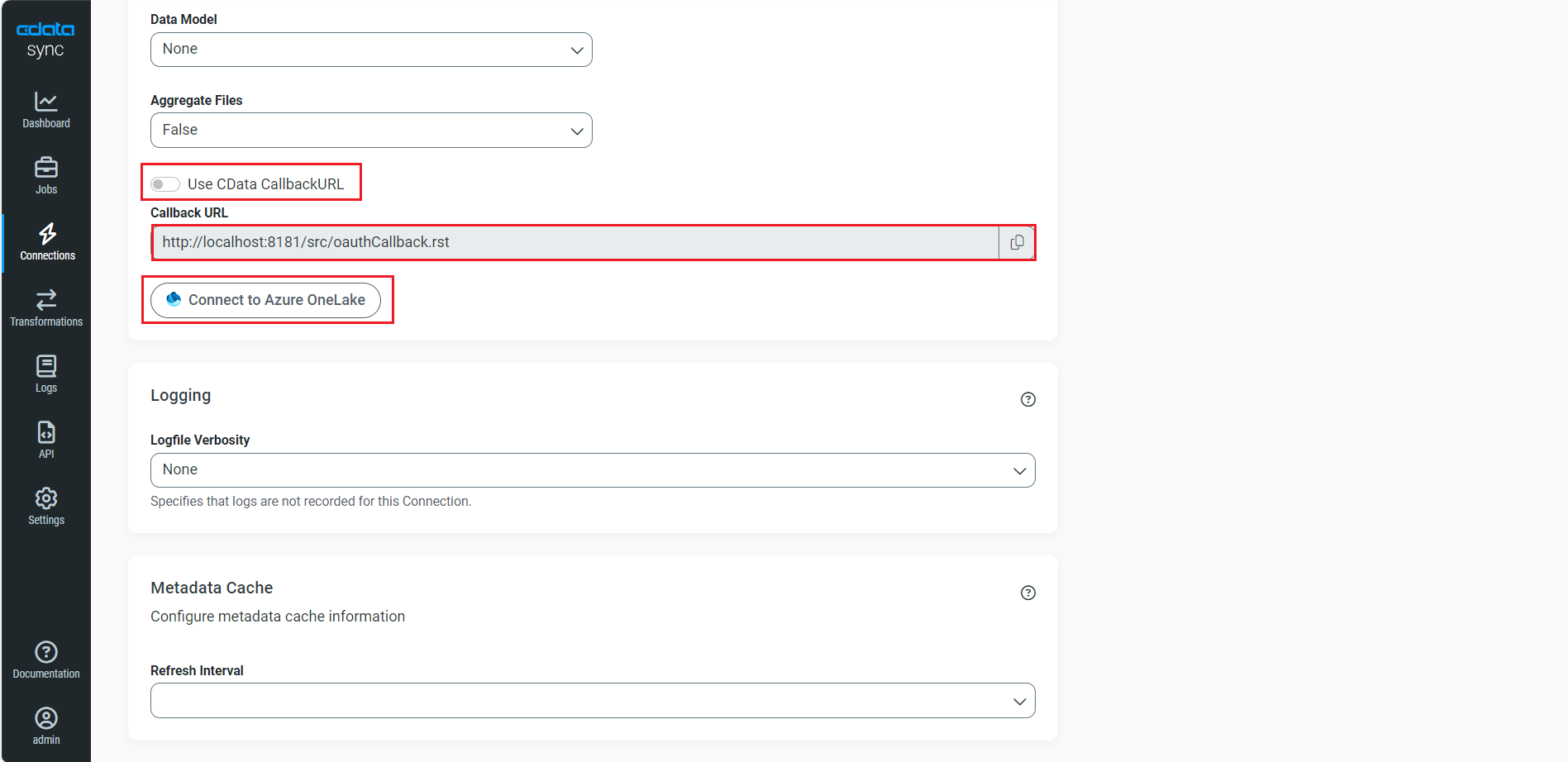
- Navigate to the Advanced tab and scroll down to the Miscellaneous section.
- In Include Files, enter the file format initially selected.
- Select Create from Insert Mode dropdown. The other Insert Mode options are Overwrite and Batch.
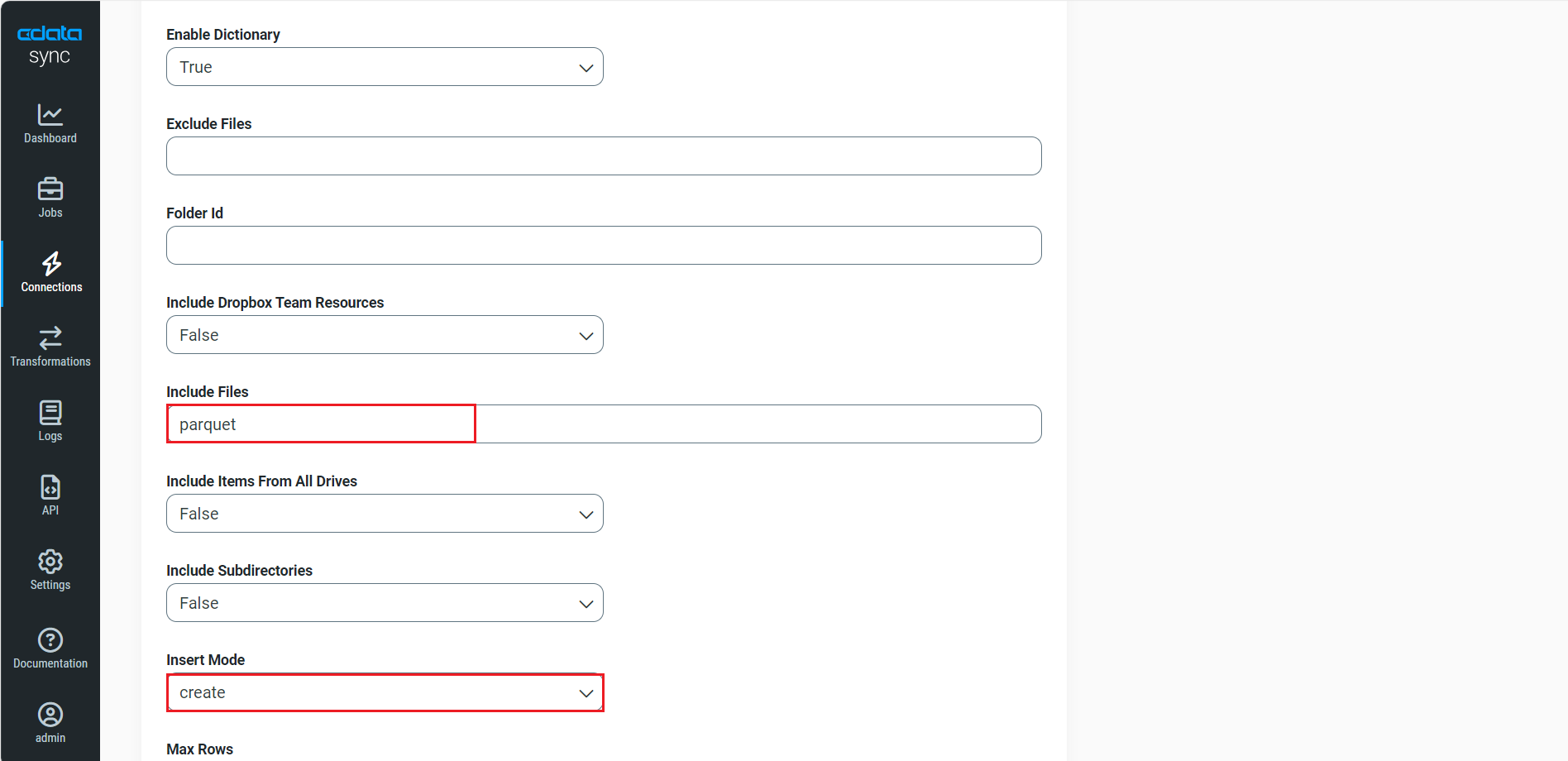
- Now, navigate back to Basic settings and click Connect to Azure OneLake.
- Once connected, click Create & Test to save the connection.
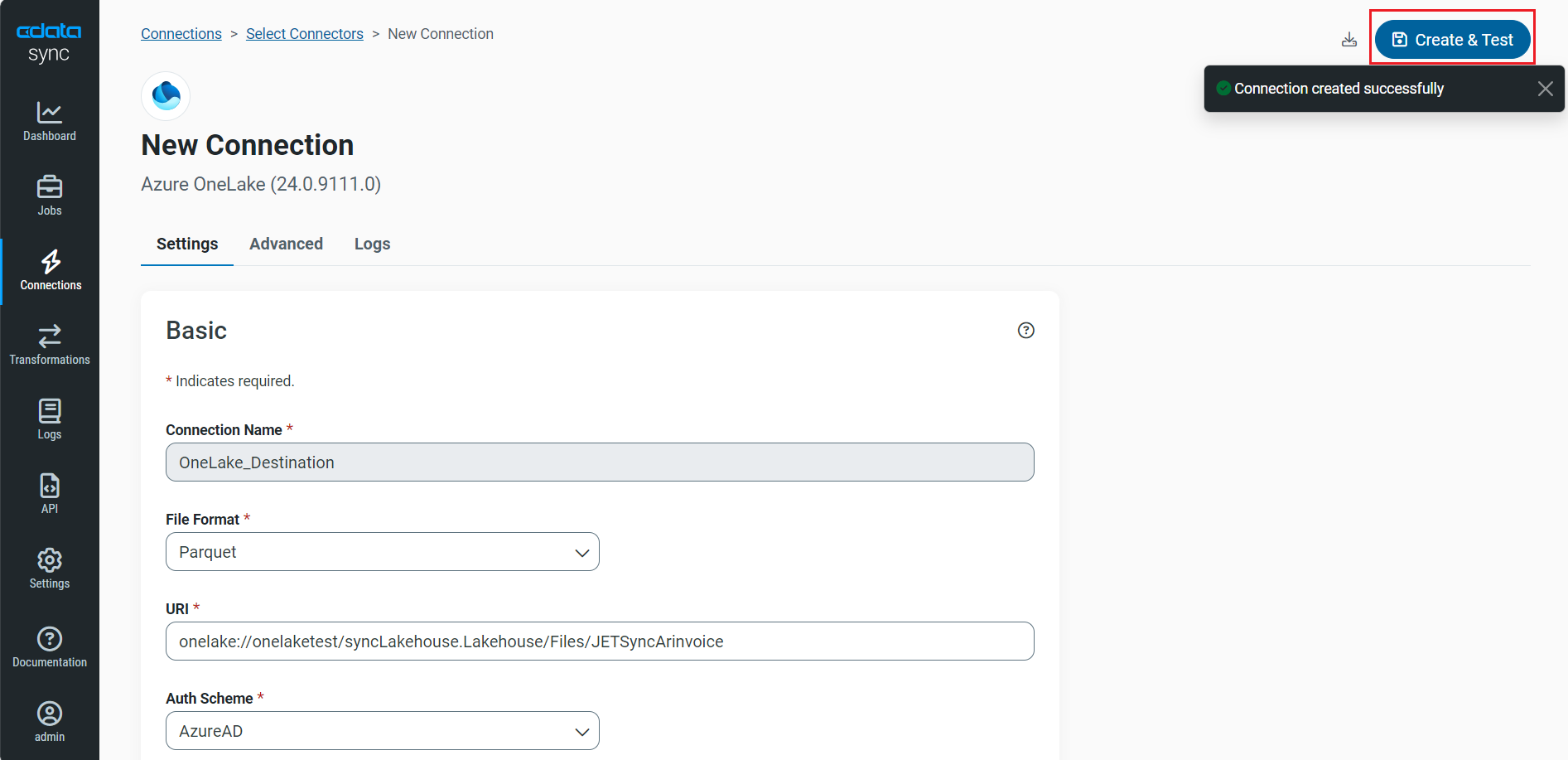
You are now connected to OneLake and can use it as both a source and a destination.
NOTE: You can use the Label feature to add a label for a source or a destination.
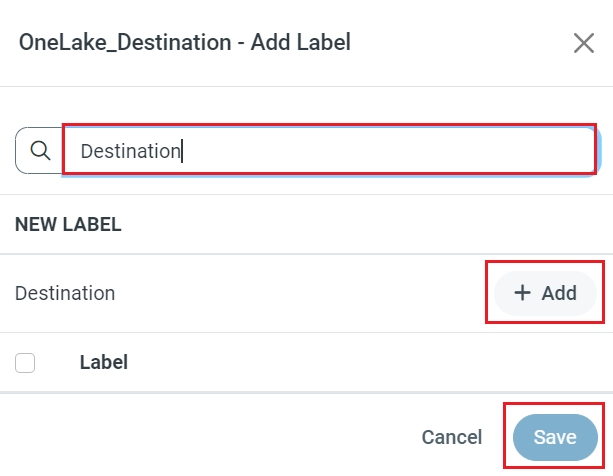
In this article, we will demonstrate how to load Google Sheets data into OneLake and utilize it as a destination.
Configure the Google Sheets Connection
You can configure a connection to Google Sheets from the Connections tab. To add a connection to your Google Sheets account, navigate to the Connections tab.
- Click Add Connection.
- Select a source (Google Sheets).
- Configure the connection properties.
You can connect to a spreadsheet by providing authentication to Google and then setting the Spreadsheet connection property to the name or feed link of the spreadsheet. If you want to view a list of information about the spreadsheets in your Google Drive, execute a query to the Spreadsheets view after you authenticate.
ClientLogin (username/password authentication) has been officially deprecated since April 20, 2012 and is now no longer available. Instead, use the OAuth 2.0 authentication standard. To access Google APIs on behalf on individual users, you can use the embedded credentials or you can register your own OAuth app.
OAuth also enables you to use a service account to connect on behalf of users in a Google Apps domain. To authenticate with a service account, register an application to obtain the OAuth JWT values.
See the Getting Started chapter in the help documentation to connect to Google Sheets from different types of accounts: Google accounts, Google Apps accounts, and accounts using two-step verification.
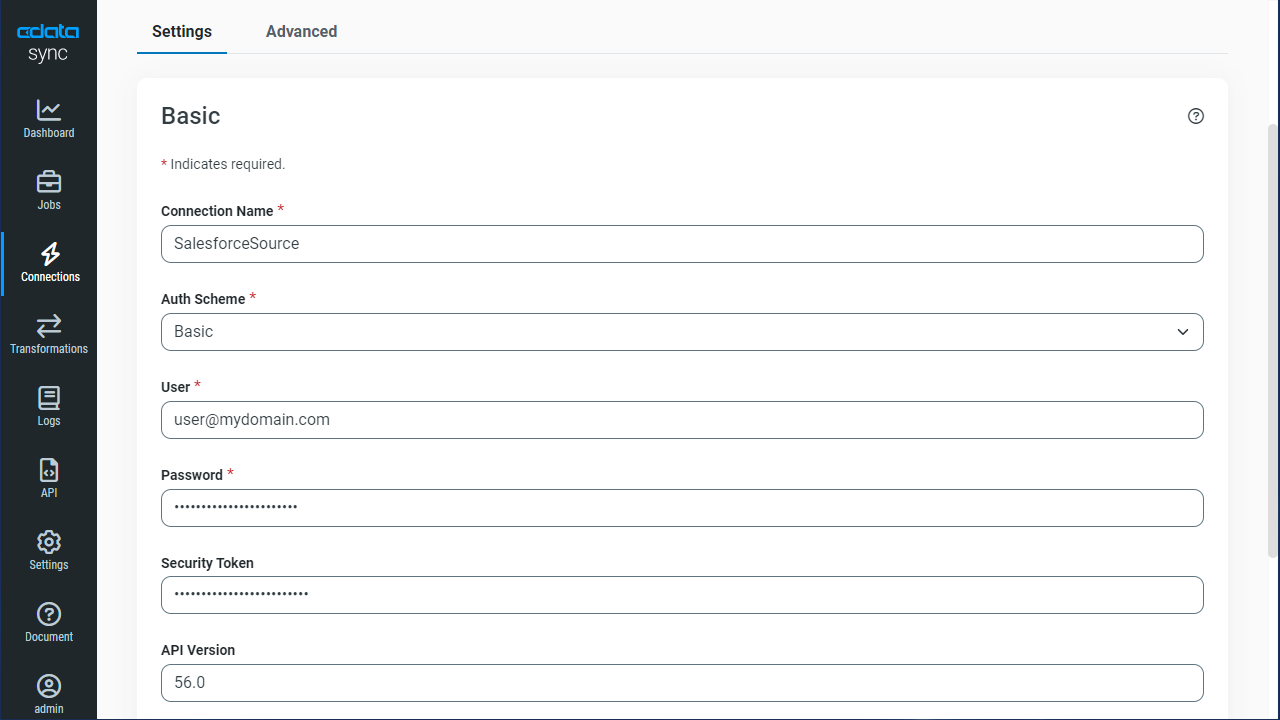
- Click Connect to Google Sheets to ensure that the connection is configured properly.
- Click Save & Test to save the changes.
Configure Replication Queries
CData Sync enables you to control replication with a point-and-click interface and with SQL queries. For each replication you wish to configure, navigate to the Jobs tab and click Add Job. Select the Source and Destination for your replication.
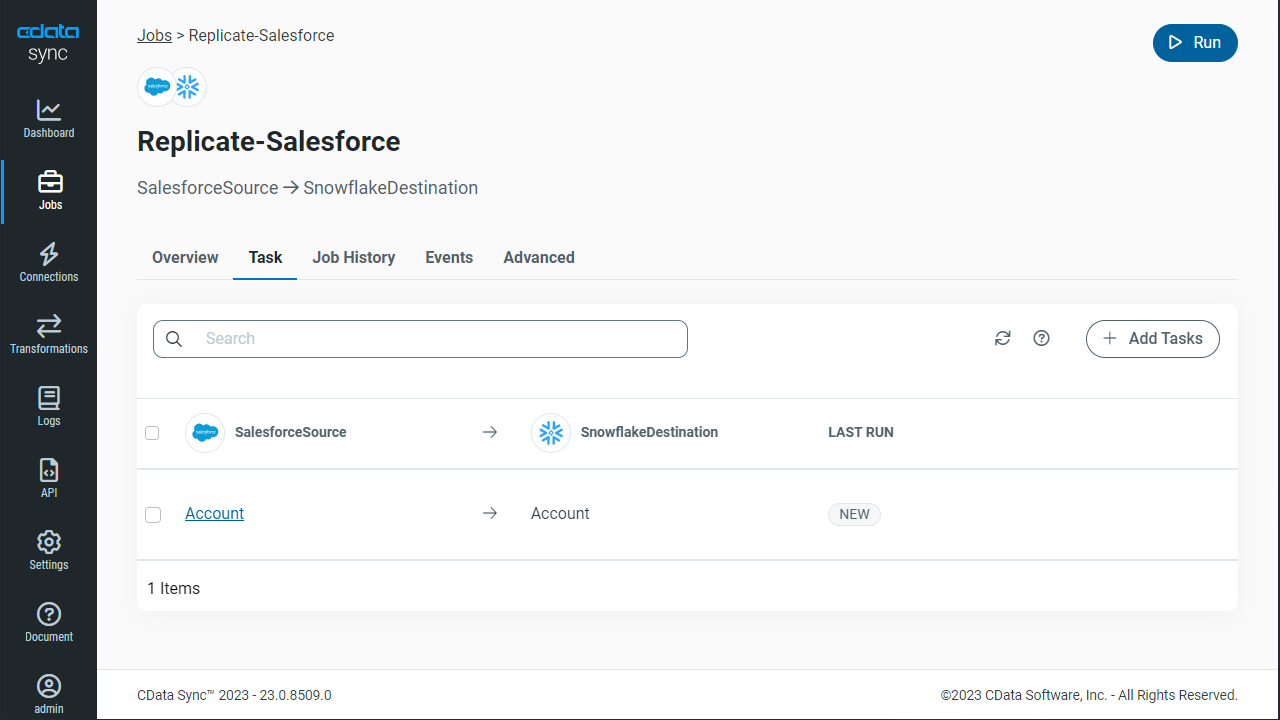
Edit the Job
- In the Advanced tab of the Job, click Edit Replicate Options and select the Insert Mode as Single File from the dropdown (If the Insert Mode is selected as "Create" in the OneLake connector.)
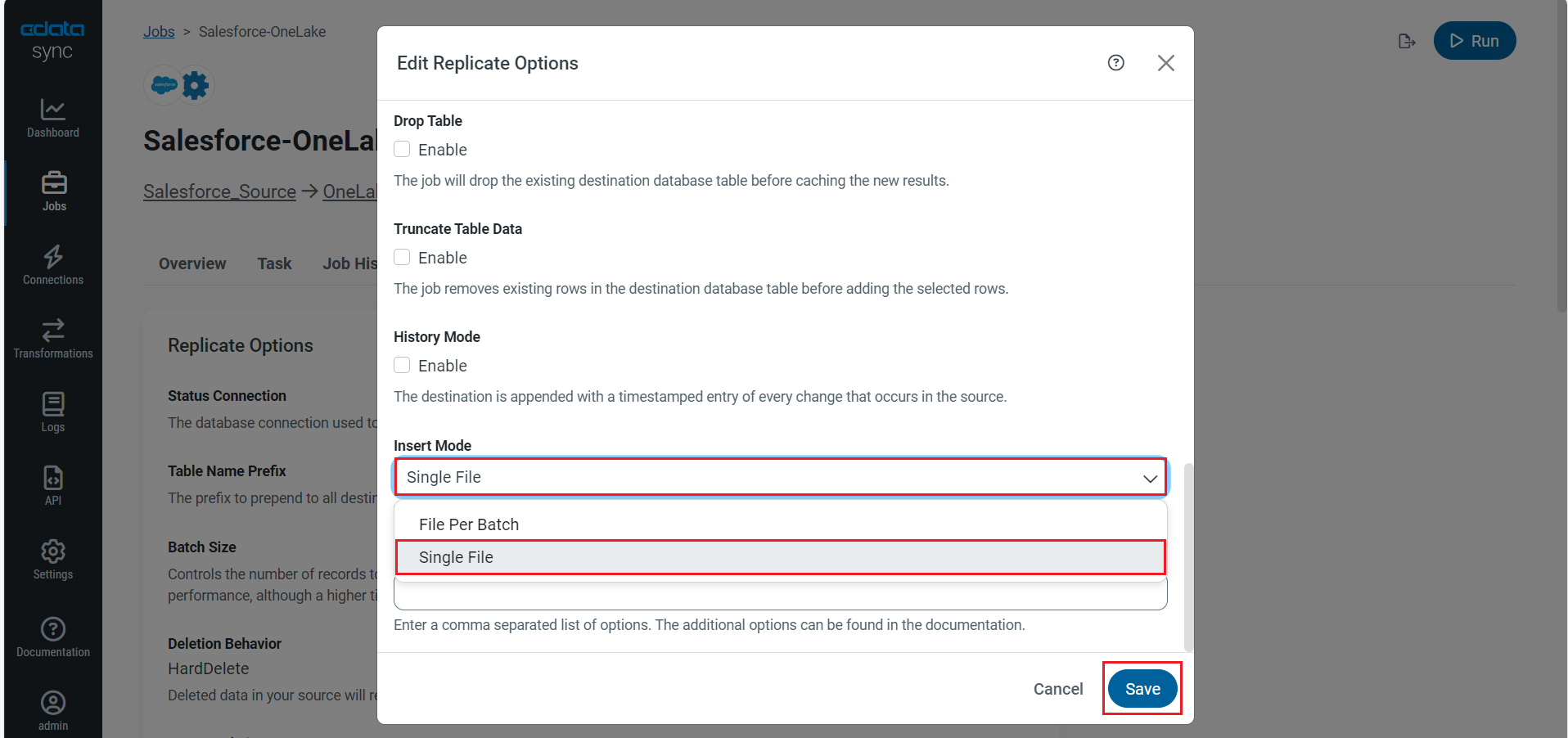
- In "Batch" mode, you need to set the Insert Mode in Jobs to File Per Batch.
- In "Overwrite" mode, both Single File and File Per Batch work.
Replicate Entire Tables
To replicate an entire table, click Add Tables in the Tables section, choose the table(s) you wish to replicate, and click Add Selected Tables.
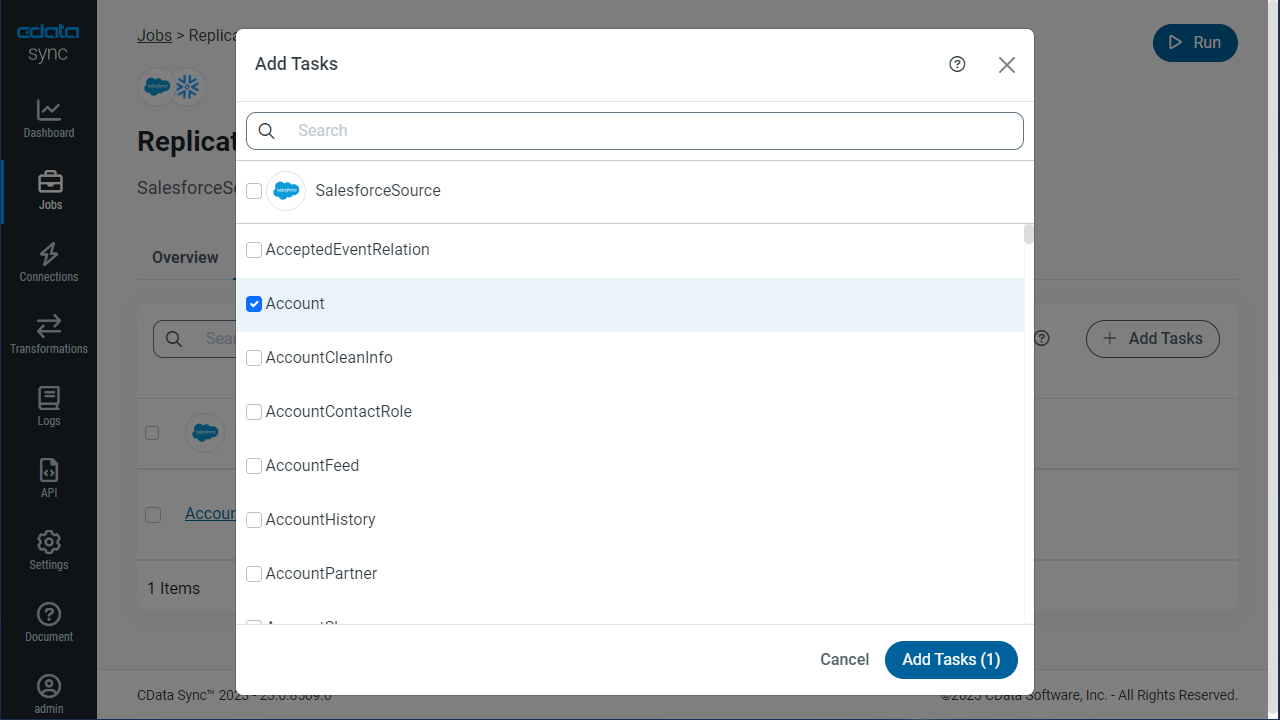
Customize Your Replication
You can use the Columns and Query tabs of a task to customize your replication. The Columns tab allows you to specify which columns to replicate, rename the columns at the destination, and even perform operations on the source data before replicating. The Query tab allows you to add filters, grouping, and sorting to the replication.
Schedule Your Replication
In the Schedule section, you can schedule a job to run automatically, configuring the job to run after specified intervals ranging from once every 10 minutes to once every month.
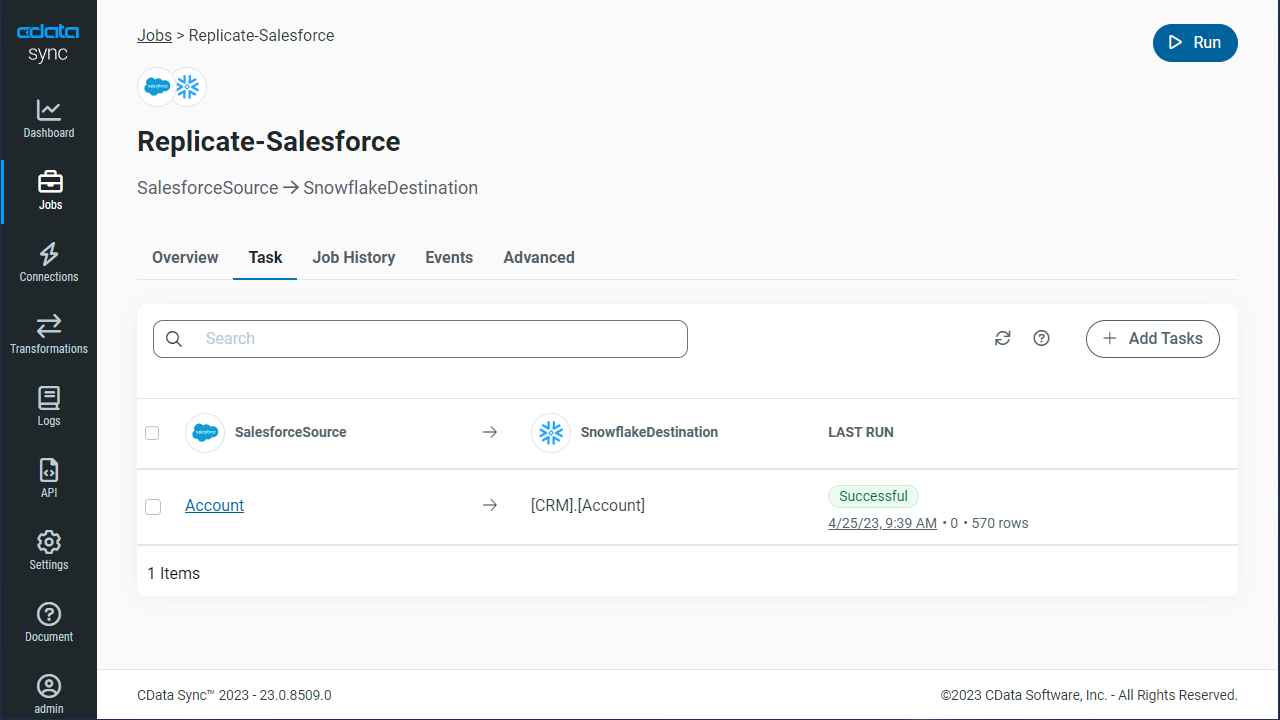
Once you have configured the replication job, click Save Changes. You can configure any number of jobs to manage the replication of your Google Sheets data to OneLake.
Free Trial & More Information
Now that you have seen how to replicate Google Sheets data into OneLake, visit our CData Sync page to explore more about CData Sync and download a free 30-day trial. Start consolidating your enterprise data today!
As always, our world-class Support Team is ready to answer any questions you may have.

